The Chemical Dynamics and Spectroscopy Group consists of 5 principal investigators. The research objectives of this group are to provide a better understanding of (1) the structure, chemical behaviors, and spectroscopy of highly reactive polyatomic radicals, transient species, and molecular cluster, (2) the microscopic details of the mechanisms and dynamics of elementary chemical reactions, and (3) the applications of the above in complicated systems, like atmospheric chemistry and carbohydrate mass spectrometry.
The group has established itself as one of the leading groups in the field of chemical dynamics in the world, aiming to solve problems of interest in atmospheric, combustion, astrophysics, and carbohydrate mass spectrometry with both experimental and theoretical approaches.
Short-lived Criegee intermediates play an important role in atmospheric chemistry. Jim Jr-Min Lin is studying the spectroscopy and reaction kinetics of Criegee intermediates, which are a new candidate of atmospheric oxidant, at near atmospheric conditions by using time-resolved absorption technique. Recently Dr. Lin's team are studying the oxidation processes from volatile organic compounds to secondary organic aerosols with an oxidation reactor. Kaito Takahashi's research interest is understanding how electronic structure affects reactivity. He has recently been focusing on using quantum chemistry methods to connect the transition metal d-orbital occupation in single atom catalyst configurations with its reactivity. In addition, with close collaboration with Jim Jr-Min Lin group, he has studied the effect of hydrogen bonding on the reactivity of Criegee intermediates. Pei-Ling Luo employs a new approach to achieve simultaneous determinations of multiple transient species, including HO2 and OH radicals, with time-resolved dual-comb spectroscopy in the mid-infrared region. Key atmospheric reactions related to HO2 and OH radicals can be investigated via high-resolution time-resolved dual-comb spectral mapping. Jer-Lai Kuo's group uses theoretical and computational tools to investigate the structure and properties of molecular crystals and 2D materials.
Chi-Kung Ni investigates the dissociation mechanism of carbohydrates in the gas phase and develops a simple and rapid method, namely logically derived sequence tandem mass spectrometry (LODES/MSn), for de novo structural determination of oligosaccharides. Many unexpected oligosaccharides were identified from various biological samples using this new mass spectrometry method.

Jer-Lai Kuo
Research Fellow
MOLECULAR AND MATERIAL MODELING LAB
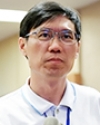
Jim Jr-Min Lin
Research Fellow
Atmospheric Chemistry and Reaction Dynamics Laboratory
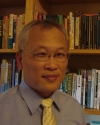
Chi-Kung Ni
Research Fellow
Carbohydrate Mass Spectrometry Laboratory

Kaito Takahashi
Research Fellow
THEORETICAL CHEMICAL REACTION DYNAMICS LABORATORY
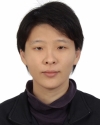
Pei-Ling Luo
Assistant Research Fellow
Broadband Laser and Applied Spectroscopy Laboratory
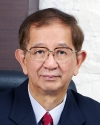
Yuan-Tseh Lee
President Emeritus

Kopin Liu
Distinguished Visiting Chair
CHEMICAL DYNAMICS LABORATORY
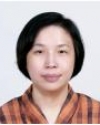
Yen-Chu Hsu
Adjunct Research Fellow
LASER SPECTROSCOPY LABORATORY OF TRANSIENT MOLECULES

Wen-Bih Tzeng
Adjunct Research Fellow








